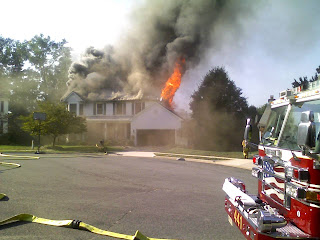

Aerial ladders and tower ladders make up our compliment of truck companies with a 50-50 split between the two. Both have unique characteristics. We should treat these units as another tool, just as much as a halligan, some sort of hook, Hurst tool, saw, etc. The aerial device is certainly not a hand tool, but a tool just the same. When considering tactical options, the aerial ladder is more suited to stationary functions, while the tower ladder is best suited for tactics requiring mobility of the device. Discuss the different kinds of situations where you would more likely use an aerial, and those where the tower would be best. An example of this is the issue of strip shopping center operations. It is preferable for an aerial to take the rear and a tower takes the front when that is an option. Consider not only the use of the master streams from these units but rather all the different tactical operations for which they might be engaged.
Courtesy of Deputy Fire Chief Jeff Coffman
Courtesy of Deputy Fire Chief Jeff Coffman







